What trends are already becoming apparent in advance of the international interiors show imm cologne? First impressions of new products indicate the continuation of trends like “German comfort”, but also new areas of focus.
In January 2016, imm cologne, the international interiors show held in the heart of Europe, will open its gates once again. As in the past winter, the fair organisers are expecting to once again spot a dominating trend among the wide selection of furnishing suggestions for the most diverse styles and lifestyles: comfort, in all its many facets. Because a fair like imm cologne doesn’t just set trends, it also reflects them.
Whether the subject is computer games, cameras, fashion or furniture, the success of trade fairs depends in large part on the new products and concepts that their exhibitors present. Trade fairs are places for trading the most popular colours, celebrating technological innovations and ideas or presenting new interior design concepts. The pressure for innovation is particularly pronounced in places where trendsetters, the media and manufacturers continually try out or introduce new products for individual lifestyles. For this reason, each year, imm cologne predominantly features products that have been newly created by designers and interior designers who develop things in new forms and materials, alternative product concepts and new subject matter. Every year, the ingredients are mixed together again and everything is recombined.
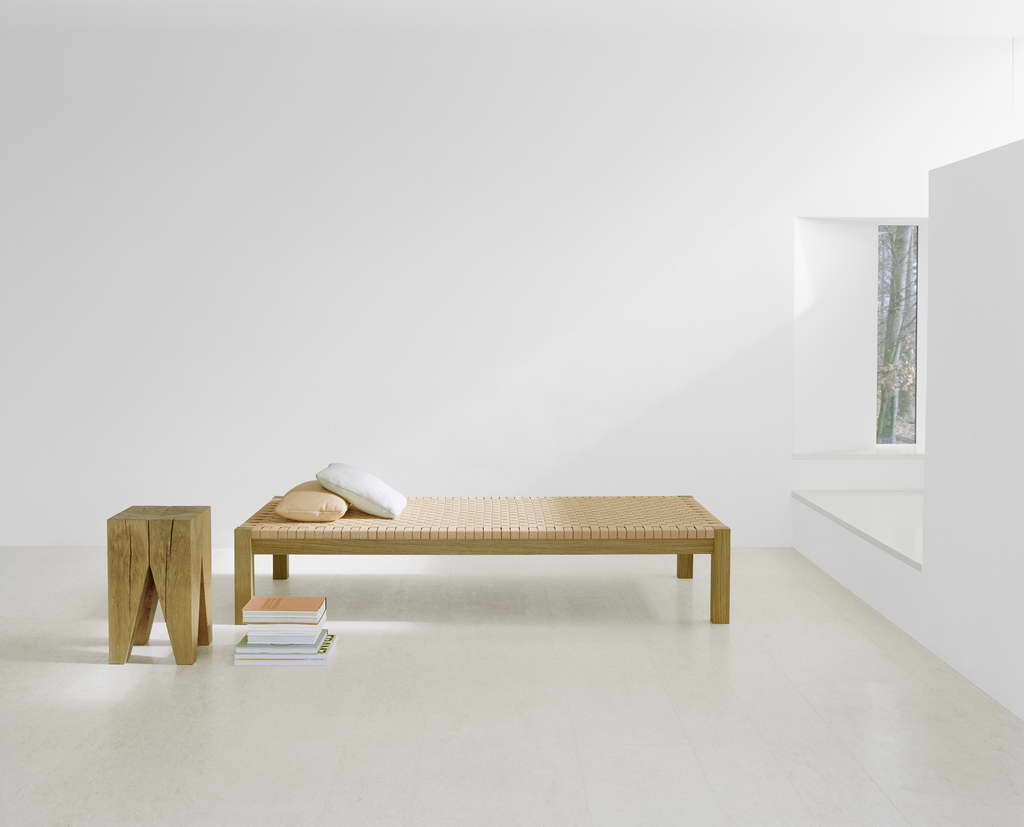
Re-Editions: Back to the Future
The trend towards re-releasing vintage and new modern classics has become a well-established one within the furniture sector. The next imm cologne will again showcase several new editions. However, over the past several years, a countermovement has taken hold at the international interiors show. In many corners of the Cologne exhibition halls, especially in the design segment “Pure”, there they are again: the old furniture classics from the Bauhaus, Eileen Gray and Ray Eames. And the “usual suspects” among the furniture éditeurs are not the only ones referring to old designs. Names like Vitra, Classicon or Thonet, which once rose above trendy product ranges like islands above the sea, are associated more and more with furniture and accessories that either owe their forms to design precedents like vintage, fifties or classic contemporary,or are true re-editions. There is no shortage of current examples. One of them is the “Thonet All Seasons” outdoor collection, which is bringing a whole range of tubular steel classics from the Bauhaus era out-of-doors, including cantilever chairs S 33 and S 34 by Mart Stam, side table B 9 and lounge chair S 35 by Marcel Breuer and cantilever chair S 533 by Ludwig Mies van der Rohe. e15 is also demonstrating historical awareness; its Ferdinand Kramer Collection restores access to an entire series of furniture by one of the most important German Modernist architects and designers. Working closely with Kramer’s family and referring to the archives, e15 produced twelve iconic designs from the German architect’s various creative periods between 1925 and 1959.

Furniture types: When tidying up invites us to live…
Shelves, whether open or closed, are all around us. In the first years following the commencement of the digitalisation of our daily lives, this type of furniture seemed indispensable but not particularly sexy. However, organisational furniture has developed into a true multi-talent that, whether as the focal point of a room, a decorative accessory, or a climbing wall, allows plenty of room for individuality.
Just for the record, it should be noted that they still exist: cupboards and cabinets, high and low sideboards, bookcases, closed chests and other furniture with drawers. In the digital age, in which books still enjoy wide popularity, contrary to all predictions, both are needed: open shelves and boxes for presenting collectibles, as well as storage space that can be shielded from view. Interlübke, for example, is offering cube gap, a modern interpretation of the programme first launched in 2002, with designs by Werner Aisslinger. The collection includes a sideboard that not only opens in every direction, but also looks particularly elegant, as it is made of a new material variant in a fashionable, shimmering black, called “black concrete”.
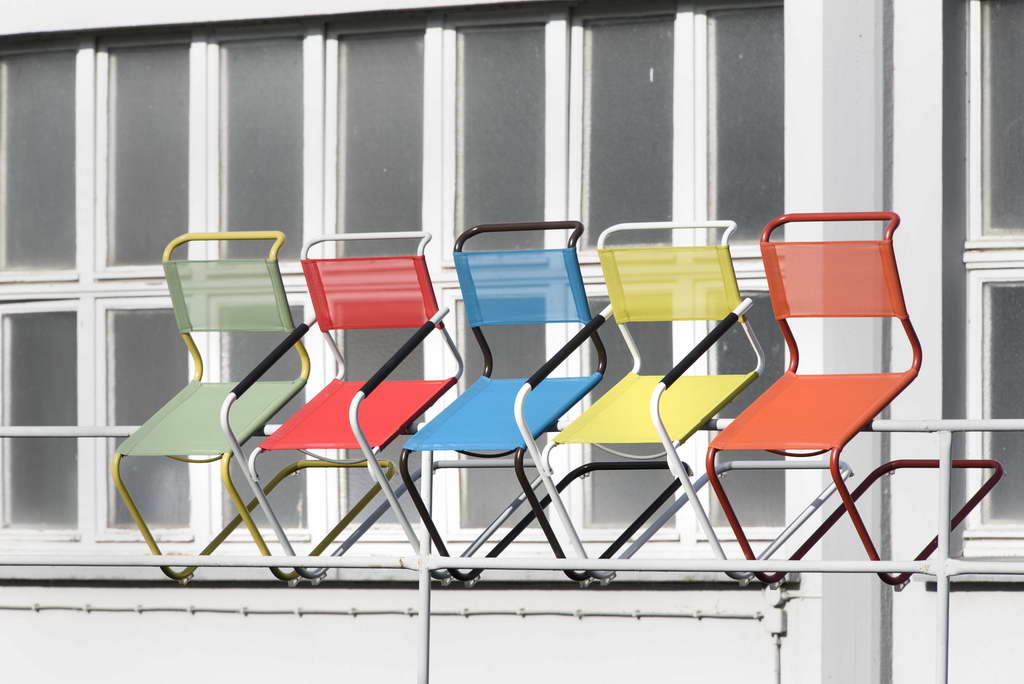
Furniture design: En pointe of a new, light furniture world
The trend is moving through furniture design to the bathroom: furniture and fittings are once again becoming lighter, more sculptural and playful. The heaviness of bulky furniture is making way for the finely balanced down-to-earthiness of sofa, light and tub. Just when you thought that no modern apartment could manage anymore without a loft-like living room, in order to make room for these oversized sofas with their seat depth proportioned for giants, a new trend is already becoming evident: sofas with an almost delicate design and dimensions that stand light on their feet next to cocktail-like armchairs and little tables appearing in groups, with a tinge of lamps above them dispersing flecks of light over the group landscape as if blown there by the wind. Clearly contoured, compact upholstery forms hover on extremely thin legs or metal runners and diagonally angled feet balancing on their tips. The shapeless cushion landscapes are relieved by slimmer, even softly curved forms. Already at the last international interior design fair imm cologne, the wish for lightness was palpable, and not only for freestanding furniture (like from Capo D’Opera), but also in the form of original, metal-framed furniture, in which workplace, freestanding furniture and even lamps are suspended (GObyMM), extending to the classic dining space ensembles (seen, among other places, in Menu). The omnipresent living room wall cabinet makes way for a seemingly more improvised, casually arranged ensemble of sideboard, individual shelves and pictures, sofa and armchair. Living rooms and furniture stores, cafes and furnishing magazines are being influenced by a lightness that brings a goodly portion of joie de vivre into contemporary interior design, sometimes in Scandinavian pastels, sometimes in subdued, brightly contrasting nature tones and then once again cheerfully colourful.
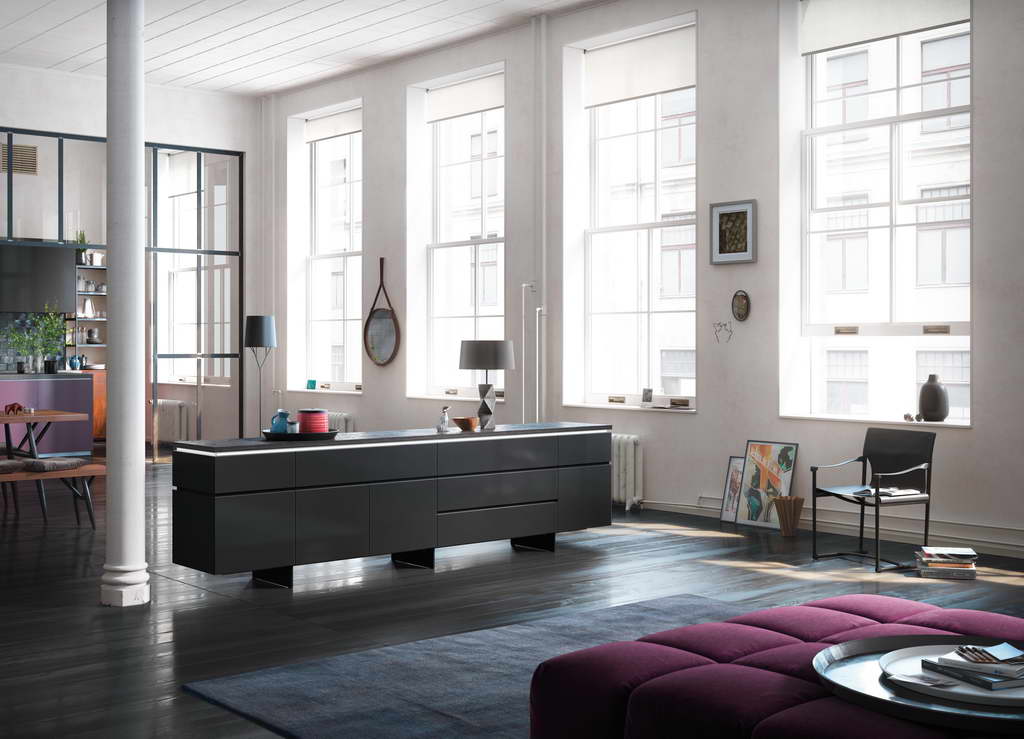
Bedrooms: Too good to sleep through
In a society accustomed to stress, there is growing appreciation for the value of a good night’s sleep. Consequently, more and more attention has focused on the bed. But it is the accessories that appeal to people most and turn the bedroom into a living space. Although reading books remains one of the most popular things to do in bed, and is accordingly assisted by high-quality lighting products and upholstered headboards, mobile multimedia tools and smartphones also bring the social environment and entertainment habits into the bedroom. It is therefore becoming more and more of a second living room, in which occupants carry out the most varied activities.
This justifies more elaborate furniture. More and more, bedroom collections are taking on the character of living room furnishings: the new Hülsta collection Metis plus, for example, offers not only beds with upholstered headboards, but also a furniture range whose lighted shelves, dressers and sideboards, push-to-open technology and integrated, open compartments for decoration rival those of any living room collection. The Hülsta collection Elumo II even includes flatscreens integrated into the cabinet, and the resemblance of functional headboards to sofas is not without reason: individually adjustable and with rear upholstery, they are full-fledged leisure furniture that can be placed anywhere in the room.
The trend-oriented bedroom furnishings consist less and less of the uniformly designed models of a series. Instead, they are increasingly composed of individual modules of a product programme that fit together without seeming uniform. Mixtures of materials enhance this aesthetic. Heavy wardrobes that match the bed and bedside table are becoming harder and harder to find. Today, the furniture industry offers wardrobes with more shelves, more clothes rails or more drawers – based entirely on individual needs.
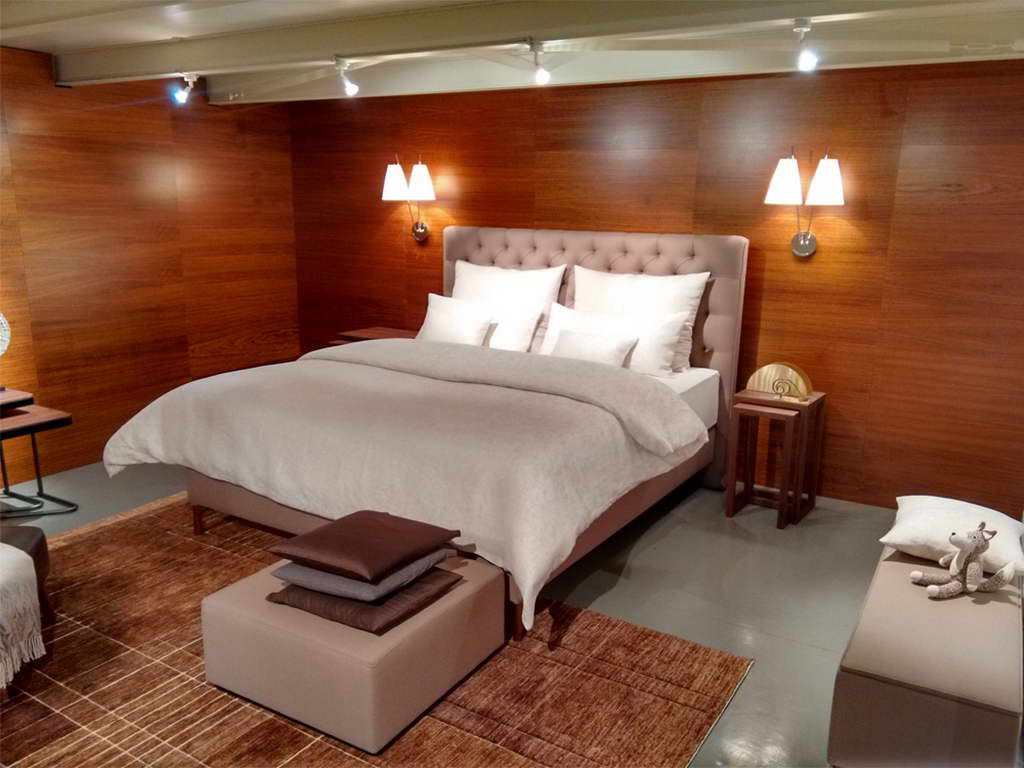
Interior trend: German comfort 2.0
In times of growing uncertainty, our home appears to us as a safe haven for retreat into and relaxation in our own small, manageable world. And the private home is also gaining in importance for socialising, meeting with friends and as a workplace. As the last edition of the international interiors show imm cologne demonstrated, comfort is in again, and it seems that part of what makes a house a home is outfitting it with personal accessories and decorative elements.
Of course, more spare living environments can also be furnished with decorative elements to make for a comfortable space; the current trend towards the decorative, however, applies to entire living concepts, provides sofas with cushions and side tables, shelving units and console tables with decorative accessories, scatters baskets on overlapping rugs and takes possession of entire wall elements. If there isn’t at least one wall in the home adorned with patterned wallpaper, then photo galleries, wall decals and shelves arranged in groups work to break up the two-dimensionality of all too stark wall surfaces.
In the midst of these times fraught with fears, “Das Haus – Interiors on Stage” at imm cologne 2016 conveys a message of openness. Designer Sebastian Herkner, Guest of Honour 2016, deliberately chose a round form in which the curtains, which he used in place of walls to define the outside boundaries of his “house”, can be adjusted to constantly open up new perspectives into and out of the house. His vision of living also presents a friendly, comfortable face full of colours and enticing sensory impressions in the interior.

Product innovations: First trade fair guests have already set up in Cologne
The Cologne trade fair duo of imm cologne and LivingInteriors shows the whole world of interior design, and surprises not only with trendy, updated classics suited for outdoor use, but also with new products and ideas for flooring and bathrooms: the new furniture season starts classic and cosy, cool and hot in January. The first new products were already underway in the Rhine metropolis for the “Köln möbliert” (Furnishing Cologne) campaign.
The presentations of the new products from the various interiors segments are part of the “Köln möbliert” (Furnishing Cologne) campaign of imm cologne and LivingInteriors. For this project, Koelnmesse has commissioned photographs of current products to be taken in unusual locations in and around Cologne before they are introduced at the fair. For the campaign’s fifth year, exhibitors are once again entrusting the press team of imm cologne/LivingInteriors with the portrayal of their latest furniture and interior designs. With approximately 1,200 companies from 50 countries expected to attend, the trade fair duo of imm cologne and LivingInteriors will present a well-rounded product show, covering a broad spectrum of interior design. Over 100,000 pieces of furniture and other furnishing items will be exhibited, around a third of which will be presented to the international market for the first time at the Cologne exhibition.
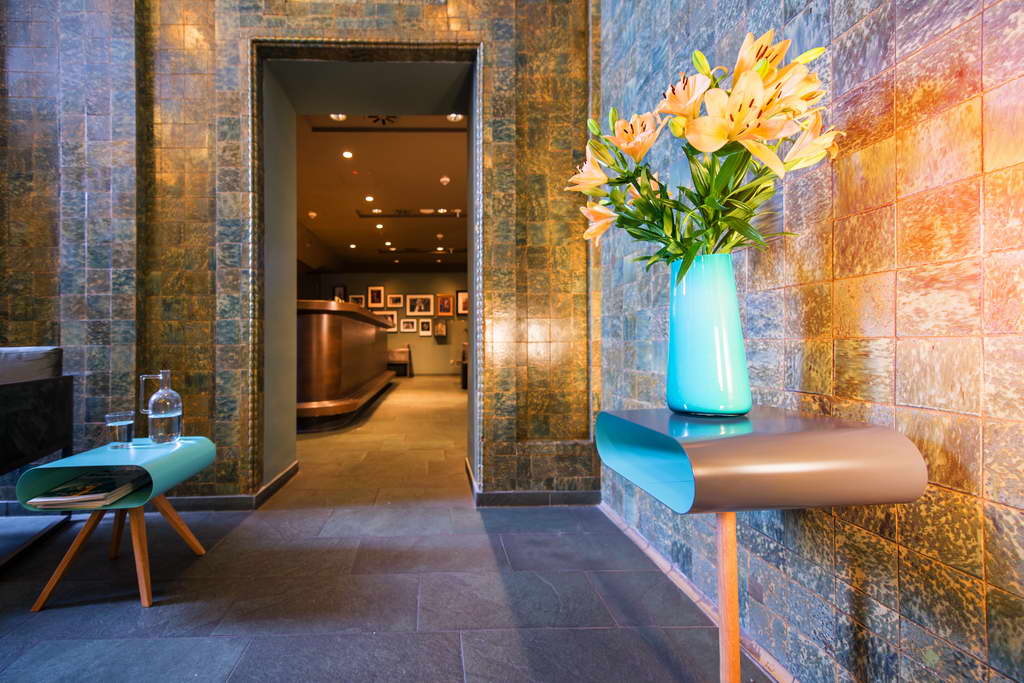
Further information:
www.imm-cologne.de
www.livinginteriors-cologne.de
